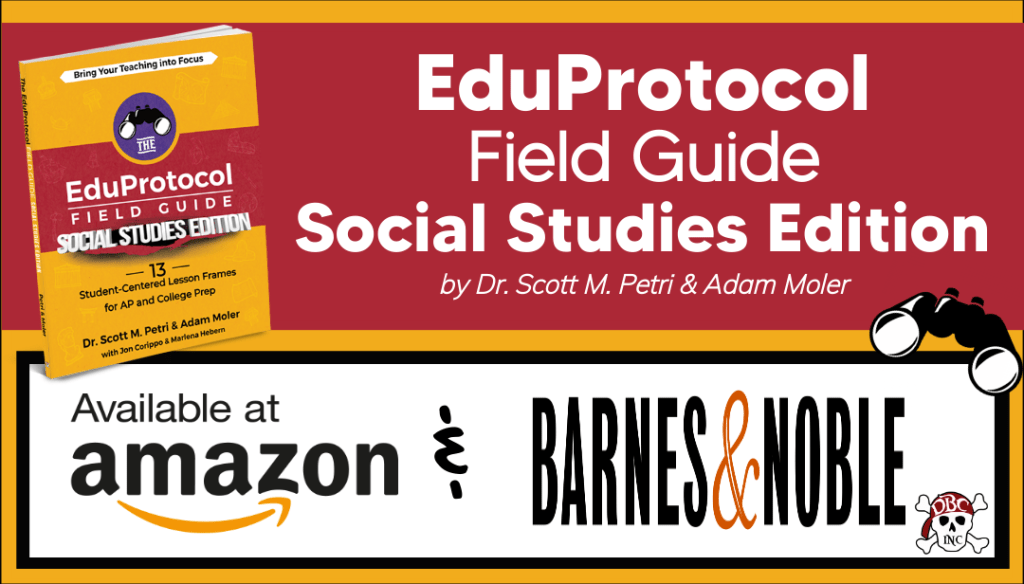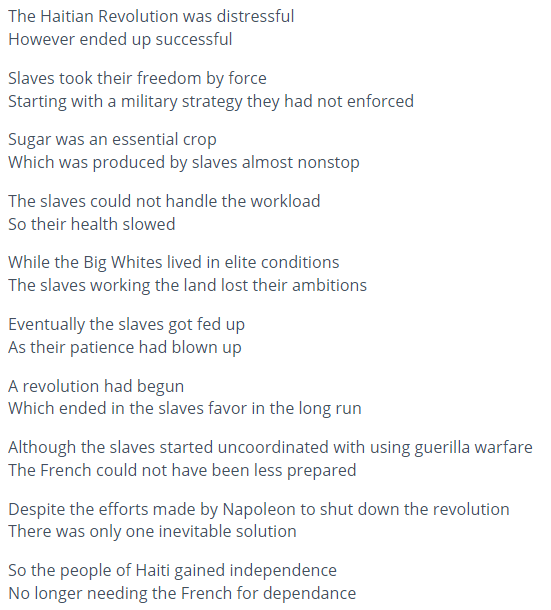
One of my go-to EduProtocols this year has been Retell in Rhyme. The act of responding to a text in writing has a very large, positive ( .77) effect on reading comprehension. Sometimes it is not easy for teachers to tell if a student has selected historical details because they are important, or because they are easy to rhyme. Adding a self-assessment follow-up activity with a rubric and/or a success chart can give teachers more insight as to what students got out of the learning event.
This post will look at three samples of student work and examine their self-assessments. These tenth-grade students listened to a podcast from 15 Minute History and were allowed one class period (50 minutes) to listen, take notes, and create 10 rhyming couplets with a partner. The next day, they were given 10 minutes, this rubric, and a success chart to do a self-assessment. I asked them to write at least ten sentences.

Sample A


Self-Assessment 1

Self Assessment 2

Clearly, self-assessment 1 is effective at aligning their work with the language in the rubric. They identify four key terms that are on the success chart. They justify why they omitted important dates. They could be better at identifying how many events from the success chart they included. Is it 25%? 50%? 75%? In this case, a “good portion” is hard to measure. Self-assessment 2 only mentions that they met the 20-line requirement. They cite no evidence from the rubric or success chart. If I were to grade these reflections, assessment 1 would get an A, and assessment 2 would get a D.
Sample B

Self-Assessment 1

Self-Assessment 2

Both of these self-assessments would be in the B range. I like how #1 acknowledges that they needed more details. I like how #2 includes Napoleon & Gens de Couleur, but they could have been more specific when saying “Some lines had key summarized details.” This is your chance to convince your teacher you deserve an A. Don’t blow the opportunity with soft, non-specific language.
Sample C


Self-Assessment 1

Self-Assessment 2

Both of these assessments would be in the A category. Teachers can extend learning by asking students to compare their work to a success chart and/or a rubric. Andrade (2018) analyzed 76 empirical studies on self-assessment and concluded that “self-assessment is the act of monitoring one’s processes and products in order to make adjustments that deepen learning and enhance performance. Although it can be summative, the evidence… strongly suggests that self-assessment is most beneficial, in terms of both achievement and self-regulated learning, when it is used formatively and supported by training.” This means students self-assess to give themselves feedback and gain clarity on their performance guided by academic advisors. Students will improve their self-assessment abilities with coaching and reps over time.
I look forward to seeing your results with Retell in Rhyme. Please tag me on Twitter and use the #EduProtocols hashtag. If you want to learn more about #RTR you can listen to this podcast.
